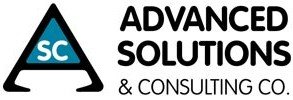For starters listen to this video from Thibault Riester, President/Founder, and Controleplus.fr
He says “Mobility is an important driver for us. Thanks to Acumatica, our employees can connect to the same central system from any site.” Why is Thibault excited with deploying MIEPaaS? (Click the picture below) or Watch the Video
What is it – MIEPaaS? And it’s evolution
Earlier versions of MIEPaaS basically encouraged use of mobile devices as a means to access company information on the website. And yes on a small screen. At these earlier stages BYOD (Bring your own device & web front end) by each company employee was the go to method to access data. There were no standards, safeguards and procedures. This would be akin to the Wild West. Yes indeed this is/was the case. These mobile devices had multiple profiles with different operating systems (Smartphones = iOS, Android, Blackberry and more). And yes these devices provided excellent and effective means of communications between people both inter and intra to the company.
However with this “front facing” model the biggest issue in realizing the full potential of this technology was accommodating the differences in the mobile device platforms. This led to the rise to the growth of critical choice. Thus came the beginning of the “platform independent” development tools, the first critical step in realizing the full potential of “mobile empowerment”. Because consumers were not limited to the type of mobile devices they selected and because of BYOD; platform independence became critical to support the wider range of devices. And in turn provide a consistent and productive work environment for all the stakeholders.

What does MIEPaaS mean in future as it impacts all aspects of Enterprise business?
As more capable mobile devices started arriving on the horizon like iPad, the potential for accelerating “mobile platforms” became opportune to embrace. This meant that the company’s entire information backbone became a candidate for mobile interaction. This was especially true for at least some employee roles. A good example would be how sales people can interact and provide meaningful information to prospects, customers, and partners. This process had accelerated greatly in just the last few years.
Now the problem arises immediately. A lack of end-to-end information control for corporate governance, security, and compliance became the first and most universal use case for Mobile Integrated Enterprise Platform as a Service “MIEPaaS. We know that IT infrastructure has longevity, and when new tools and practices are added; this may result in surprises and ugly results. But with a well thought MIEPaaS it can decouple the mobile processes that demand responsive handling, without compromising information control and cost efficiency.
Even companies that have not recognized need for a progressive vision of IT “mobility” are finding that the “front-end” focus of current mobile application development is creating too many variations and complexities. Some enterprises have more than half a dozen of mobile application frameworks. This results in a duplication of effort, and increased security and compliance risks. Each framework needs its own tests and certifications.
What are the benefits of MIEPaaS?
The biggest benefit for enterprises to us MIEPaaS is a set of robust federated tools. A single architecture can be deployed across all the business units and mobile missions, reducing the burden of independent development and the governance problems. This MIEPaaS use case is best served if the technical strategy requires integration with the middleware used in core IT operations. Companies that have ERP vendors such as Acumatica should make use of their xRP platform which makes it easier to deploy the mobile platform. Acumatica and similar vendors provide direct use of cloud and related web services that offer direct support for mobile devices. Not only that, these providers are starting to deploy IoT features in a manner consistent with MIEPaaS principles, and using micro services (Google) or “functional programming” (Amazon, Microsoft).

Conclusion
MIEPaaS at the highest level has morphed into the “two-track IT” strategy. The core IT track is all about information collection, processing, and security and governance. The Mobile track is responsible for information exploitation and projection, worker empowerment and the business’s relationship with its customers and prospects. The first track focuses on efficiency and control, and the second on agility and flexibility. MIEPaaS, used properly, can achieve the structure, to the ultimate benefit of every company function.

